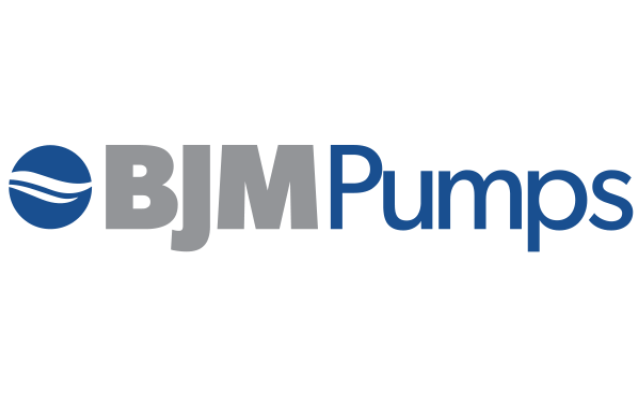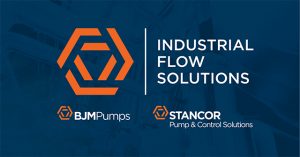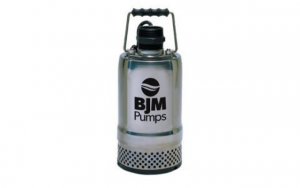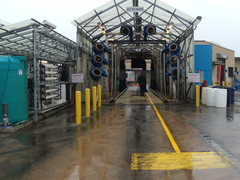By Mike Bjorkman, Vice President and Director of Marketing, BJM Corp.
Humans have been using wood to construct shelters and other buildings for thousands of years. With the advent of metal tools wood could be cut and shaped making it more useful in serving our needs. The ability to transform wood into useful shapes was further enhanced with the invention of the first sawmill in the 3rd century A.D. It was built in what is now Turkey and was powered by water to cut stone. Water was still being used for power when the first sawmills were built in the colonies of the new world, the first of which was established on the bank of the Piscataqua River near what is now York, Maine.
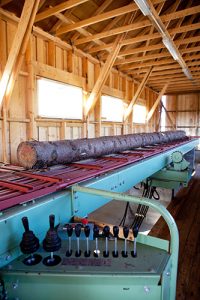 The ability to process trees into boards and planks largely directed the settlement of North America. Where there was flowing water there was power for a sawmill and the ability to more efficiently build homes and businesses. Rivers were also used to transport the felled trees to the mill and the finished lumber to the end users.
The ability to process trees into boards and planks largely directed the settlement of North America. Where there was flowing water there was power for a sawmill and the ability to more efficiently build homes and businesses. Rivers were also used to transport the felled trees to the mill and the finished lumber to the end users.
Modern sawmills are a far cry from their early predecessors, although the basic need for lumber has not changed. Today’s sawmills are massive, sophisticated facilities. Many of the processes are automated and computerized. Some use lasers to measure the wood before cutting, ensuring the maximum use of each log. And nothing goes to waste. Bark is ground for landscaping, sawdust is pressed into particle board or pellets for wood stoves. Wood chips may be ground and used for paper or as fuel to heat drying kilns. Some sawmills use their waste for co-generation facilities that power the operation and send extra energy to the grid.
The Company
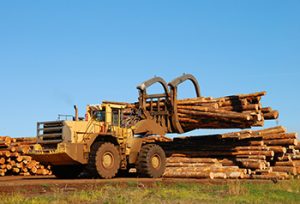 In 1955 three brothers took a gamble that they could successfully capitalize on the growing demand for lumber and bought their first sawmill in Quesnel, British Columbia. Two years later the Ketcham brothers were approached to participate in a near bankrupt sawmill in the Chilcotin region west of Williams Lake and the Fraser River, giving rise to the name West Fraser.
In 1955 three brothers took a gamble that they could successfully capitalize on the growing demand for lumber and bought their first sawmill in Quesnel, British Columbia. Two years later the Ketcham brothers were approached to participate in a near bankrupt sawmill in the Chilcotin region west of Williams Lake and the Fraser River, giving rise to the name West Fraser.
After 60 years, West Fraser has grown to the largest lumber producer in North America. With 40 facilities in Canada and the United States, West Fraser produces not only lumber, but also fiberboard, plywood, laminated veneer, wood pulp, and paper.
West Fraser is also using and actively developing new technologies that create energy efficiency and generate power from waste products in its plants. In 2012 West Fraser installed a 27 megawatt condensing steam co-generation turbo generator that uses wood waste to generate power and steam for the Cariboo Pulp & Paper mill’s operation in Quesnel. Fed by biomass from local operations, the generator produces power for the site, and provides enough additional power to B.C.’s provincial grid to supply more than 14,500 homes annually.
It’s not surprising that this forward-thinking company is interested in sustainability. In 1954 the Ketchums signed their first Forest Management Agreement (FMA) with the government of Alberta. Forestlands in Canada are publicly owned and tightly regulated. Today, West Fraser operates under some of the toughest environmental regulations in the world, which require it to sustainably manage the forestlands as well as the watershed, environment, and habitat. By 2011, West Fraser had planted more than 1.2 billion trees since the company was founded to replace those it had harvested.
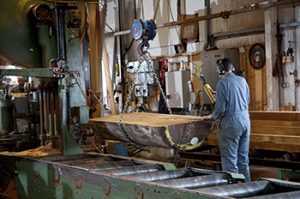 This culture of sustainability has become an integral part of the West Fraser corporate philosophy. In 1994 the company voluntarily relinquished harvesting rights to the largest intact coastal temperate rainforest on earth: the Kitlope. At 1,225 square miles, the area is equivalent to the entire forested area of the Netherlands. Now called the Kitlope Heritage Conservancy, the decision to protect the area is an example of West Fraser’s commitment to environmental stewardship. Another example was seen in 2007, when the company deferred harvesting 370,000 acres in Alberta and British Columbia in order to safeguard caribou habitat.
This culture of sustainability has become an integral part of the West Fraser corporate philosophy. In 1994 the company voluntarily relinquished harvesting rights to the largest intact coastal temperate rainforest on earth: the Kitlope. At 1,225 square miles, the area is equivalent to the entire forested area of the Netherlands. Now called the Kitlope Heritage Conservancy, the decision to protect the area is an example of West Fraser’s commitment to environmental stewardship. Another example was seen in 2007, when the company deferred harvesting 370,000 acres in Alberta and British Columbia in order to safeguard caribou habitat.
In 2000 the company made its first foray into the United States and West Fraser South was born. Two sawmills were acquired from Plum Creek Timber Co., one in Huttig, Arkansas, and the other in Joyce, Louisiana.
On March 31, 2007 West Fraser completed the acquisition of 13 sawmills in the southern United States from the International Paper Company. Upon completion of the transaction, West Fraser became one of the largest lumber producers in North America with a combined Canadian and U.S. capacity of approximately 6.2 billion board feet.
One of these newly acquired sawmills is in the small town of Leola, Arkansas, population 501. The sawmill produces lumber from southern yellow pine. West Fraser does not own or manage any forestland in the United States, instead, the logs are secured from third party sources.
The challenge
After trees are felled and transported to a sawmill, they are cut to standardized dimensions. This green wood is then dried to prevent rotting, warping, and splitting and to allow the wood to shrink. Wood can be dried in a variety of ways, but West Fraser’s Leola sawmill uses a kiln to dry the wood down to a moisture content of between 8 and 18 percent.
The green wood is packaged and then loaded onto kiln track cars. The packs are approximately 24 feet tall and the lumber sizes range from 2-by-4 up to 2-by-12, and are anywhere from 8 to 20 feet long. The kiln is approximately 125 feet long with two tracks moving lengthwise in opposite directions, explained Leola’s maintenance manager, Happy Stroud. Over the course of 12 to 14 hours the wood is pushed through the kiln, going in as green wood on one end and coming out as dry wood on the other.
The kiln is heated by steam to temperatures up to 180 F. As the lumber dries, condensation is formed. The resulting acidic liquid wicks off the lumber and is collected in one of two pits at either end of the kiln. The collected liquid is pumped back to the power house where it’s filtered for reuse.
The condensation flowing into the pits carries with it bits of wood, bark, and sand, which, along with the hot, acidic water, creates a challenging environment for pumps. Until recently, the Leola mill had been using self-priming centrifugal pumps in its two kilns, but they were easily clogged and had to be replaced about every two months, said James Reid, a sales rep for Arkansas Industrial Machinery, a supplier to the Leola plant.
The solution
Reid and his fellow rep Barry Morgan recommended BJM’s Fahrenheit stainless steel shredder pumps as a solution to the problem. The pumps were recommended for three important reasons Morgan said: 1) the stainless steel can handle the acidic water, 2) the Fahrenheit motor is designed to withstand high temperatures, and 3) the pump’s shredding action can process and clear out the pieces of wood and other particles instead of letting them build up in the bottom of the pit.
Another advantage of the Fahrenheit pumps is they sit down in the pit and push the liquid and shredded material up and out of the pit. The previous pumps sat outside the pit and had to pull the condensate up. Not only was this configuration a problem because of the debris that collected in the pits, but the high temperature of the water also caused problems.
“Hot liquid tends to flash off when you’re pulling it up the self-priming pipe,” Morgan said. He explained that hot water flashes off at a faster rate because of the heat it already has, but when you put it under a vacuum to pull it up a pipe and it flashes the pump loses prime, has to re-prime itself, and can never pull all of the fluid out.
“These shredder pumps sit in the bottom of the pit and can push the liquid out instead of having to suck it up in a straw,” he added.
Another advantage of the Fahrenheit pump is its unique Seal MinderTM technology.
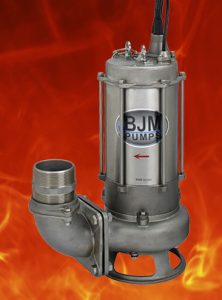 “It has two seals on it,” explained Reid. “If a seal fails an alarm will go off. That way you’ll know that first seal has failed and you can pull the pump and repair it without it breaking through the second seal, which would destroy the motor. It gives them a warning before it totally fails.”
“It has two seals on it,” explained Reid. “If a seal fails an alarm will go off. That way you’ll know that first seal has failed and you can pull the pump and repair it without it breaking through the second seal, which would destroy the motor. It gives them a warning before it totally fails.”
The alarm is attached to the control panel. If the first seal fails, it’s easily replaced.
“It improves the reliability of the equipment for the maintenance crew and for the mill,” Morgan added.
Other features that make the Fahrenheit pump ideal for this type of job are that the pumps have non-clog impellers designed for high volume and lift performance. All wear and “wet” parts such as impeller, wear-plate, oil housing, pump-housing, and inner pump top are made of Cast 316 stainless material. The elastomers such as o-rings, lip seals, and gaskets are made of reliable FKM.
The result
“There haven’t been any issues with them so far,” said Stroud. Reid concurs, saying “So far they’re doing wonderful.”
And the success of the pumps at this mill has created confidence in them elsewhere.
“It seems like I’ve hit a trend in that I’m also selling this same pump to other paper mills and people that have work pits,” Reid concluded.
The reliability and sustainability of BJM’s Fahrenheit pumps fits well with the West Fraser corporate culture.
About the Author
Mike Bjorkman is Vice President of BJM Corp. and has more than 30 years of experience in the pump industry. He serves as Director of Marketing and IT for BJM Pumps, LLC and All Test Pro, LLC. Both companies are subsidiaries of BJM Corp. Mike can be reached at 1-860-399-5937.
About BJM Pumps
BJM Pumps, established in 1983, supplies electrical submersible pumps to industrial and municipal markets throughout the United States, Canada and South America. BJM Corp. is headquartered in Old Saybrook, Conn. For more information, visit www.bjmpumps.com.
About Arkansas Industrial Machinery
Arkansas Industrial Machinery, the original company in the AIM family, was founded in 1971 in North Little Rock. AIM is a distributor of air, gas, and liquid handling and treatment equipment. AIM specializes in innovative engineering solutions for its customers and provides sales and service of equipment used. Visit www.aimcompanies.com or call (501) 758-2745 for more information.
About West Fraser
West Fraser was founded in 1955 in Quesnel, Alberta. Today it has 40 operations across western Canada and the southern United States and is the largest lumber producer in North America. For more information, visit www.westfraser.com.

